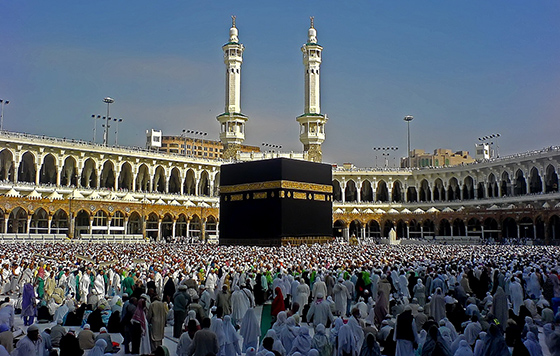The Kaaba today
Today, the Kaaba is a cubical structure, unlike almost any other religious structure. It is fifteen meters tall and ten and a half meters on each side; its corners roughly align with the cardinal directions. The door of the Kaaba is now made of solid gold; it was added in 1982. The kiswa—the large cloth that covers the Kaaba—used to be sent from Egypt with the hajj caravan but today is made in Saudi Arabia. Until the advent of modern transportation, all pilgrims undertook the often dangerous hajj, or pilgrimage, to Mecca in a large caravan across the desert, leaving from Damascus, Cairo, and other major cities in Arabia, Yemen, or Iraq.
The numerous changes to the Kaaba and its associated mosque serve as good reminder of how often buildings, even sacred ones, are renovated and remodeled either due to damage or to the changing needs of the community.
Only Muslims may visit the holy cities of Mecca and Medina today.
Livequranforkids
We are providing the educational service of Learn quran
online, female quran teacher,quran for kids, quran reading,
quran memorization for kids, quran translation,online quran,
quran for kids in USA, quran online and Online quran academy.


